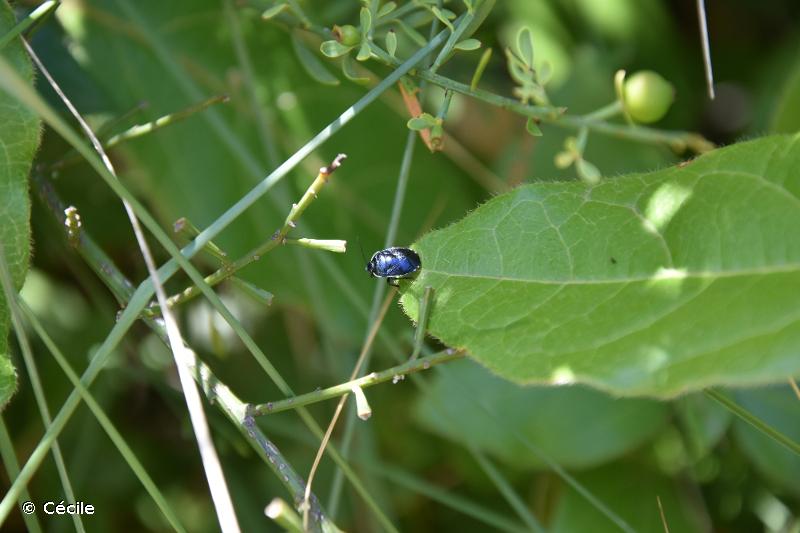
cd_nom

| Author : B. GUICHARD/PatriNat |
 |
Despite the Creative Commons license, please inform the author of the use which will be made of his photo

| Author : Cécile |
 |
To get the picture, please visit:
Cécile
email: inpn@mnhn.fr
Observation partagée via l'application INPN Espèces
Any reuse of one or more photographs on this site is subject to an authorization request from the author.
Link to the Code of Intellectual Property (Legifrance)

| Author : B. GUICHARD/PatriNat |
 |
Despite the Creative Commons license, please inform the author of the use which will be made of his photo
Taille : 6 – 8 mm
Diagnose :
Petite punaise ovale bleu-noir métallisé avec le thorax (pronotum) et l'abdomen (cories) bordés d'un bourrelet blanc. Elle n'a pas d'épines et/ou de soies sur les bords de la tête, les bords du pronotum et les ailes, et elle a des pattes épineuses (sous-famille des Sehirinae). Les membranes de ses hémélytres sont marron sombre.
Détermination : Moyennement difficile.
Espèces proches :Canthophorus melanopterus a la membrane des hémélytres foncée, ce qui permet de le distinguer des autres Canthophorus bleu-noir métallisé de taille supérieure à 6 mm : Canthophorus impressus et Canthophorus dubius qui ont une membrane des hémélytres blanchâtre et translucide.
Période d'observation : Mars à octobre avec un pic en juin et un autre en aout.
Biologie-éthologie :C'est une espèce fouisseuse qui se réfugie au pied des touffes de plantes. Elle a été observée piquant les fruits rouges du rouvet blanc ou sur des thésiums. Elle ne semble toutefois pas limitée à cette famille de plantes-hôtes car elle a été trouvée en nombre dans les dunes maritimes atlantiques au milieu des touffes d'immortelle des sables, d'épervière des dunes, ou d'armoise maritime. Cette espèce vit souvent en colonies de dizaines d'adultes et de larves, au sol. On la repère facilement en recherchant la couleur bleu métallisé caractéristique des adultes et les abdomens rouge vif des larves.
Biogéographie et écologie :Canthophorus melanopterus est une espèce méditerranéo-atlantique qui s'étend vers l'est jusqu'au Tadjikistan, en Iran et en Irak. Elle vit au sol ou sur des plantes basses ou buissonnantes, dans les milieux secs et sablonneux : pelouses rases, dunes, garrigues, friches. C'est une espèce assez commune dans son biotope.
Roland Lupoli (),2019
Continental
Metropolitan France
Overseas
Marine
Metropolitan France
Overseas
The map presents a summary at the 10 x 10 km grid of the observation data for the species transmitted to the SINP. These data have been subjected to validation filters.
The map presents a reference distribution layer of the species at the scale of departments and marine sectors. The presence and absence data were established by expertise within a network of partners. This reference distribution is used in the validation process of the SINP data at the INPN level.
Corresponds to a report on the basis of at least one observation proved within a period of 10 years (20 years for little-known invertebrates) preceding the year and no presumption of extinction since obtaining the last data nor doubt on reproductive and implemented nature of this population. For migratory species, the presence indicated concerns areas of reproduction.
This status is based on one or more of the following criteria:
This point covers the absence, more difficult by nature to demonstrate than presence. This status is based on one or more of the following criteria:
This status must be assigned to a department in which the presence of the species is casual.
Particular case of absence due to a proven extinction less than a half century ago (older disappearances are treated as "no probable or definite").
In the state of knowledge, we can not comment on the presence or absence in the current department. This is the default status when not comprised in one of the previous categories or whenever there is doubt.
The map shows the global distribution of the species based on GBIF data (Global Biodiversity Information Facility).
